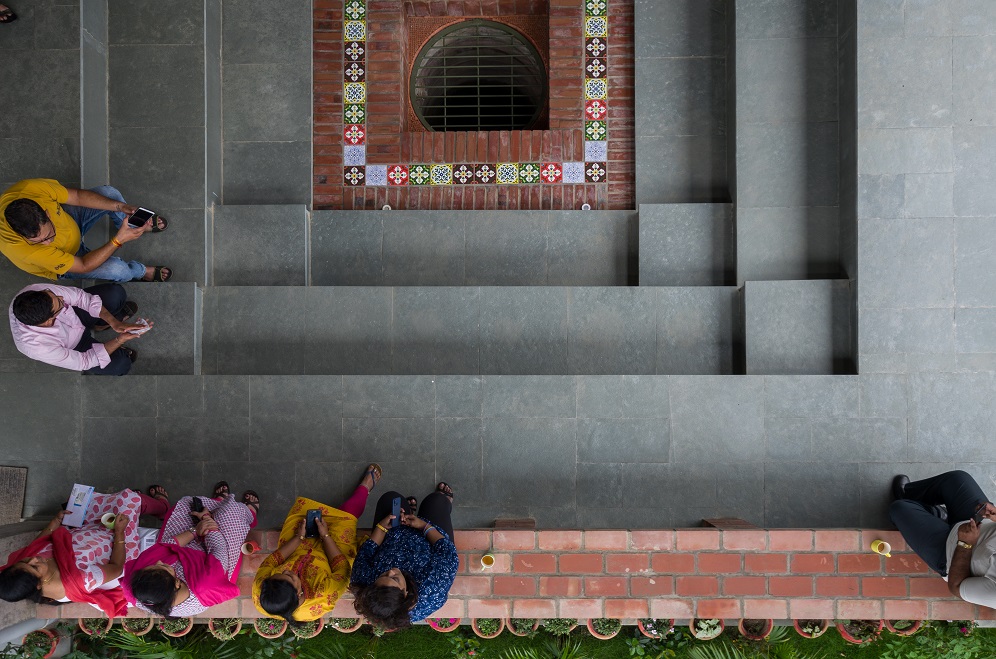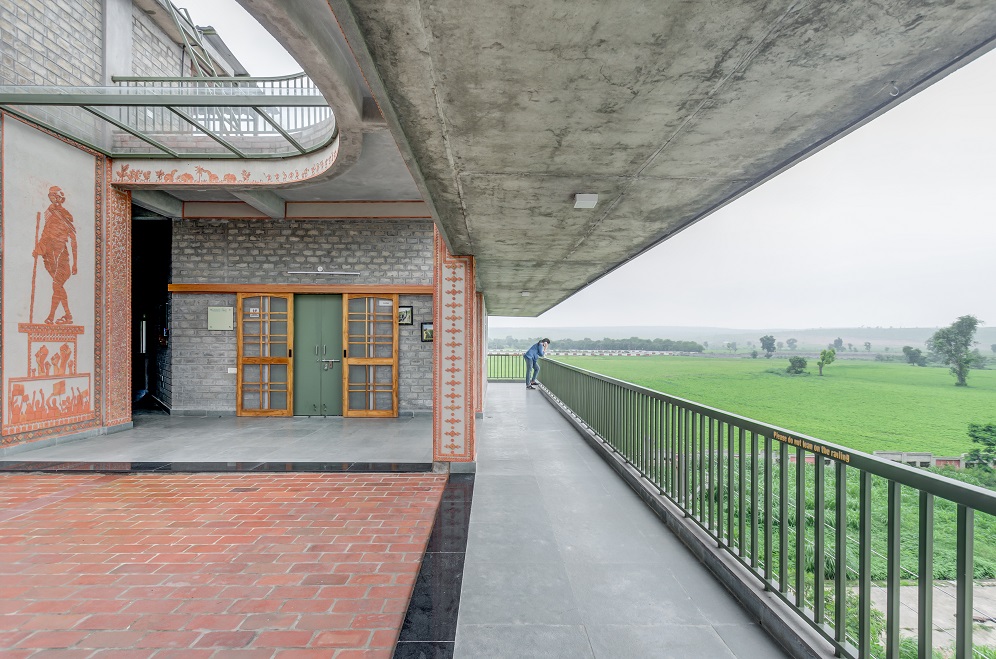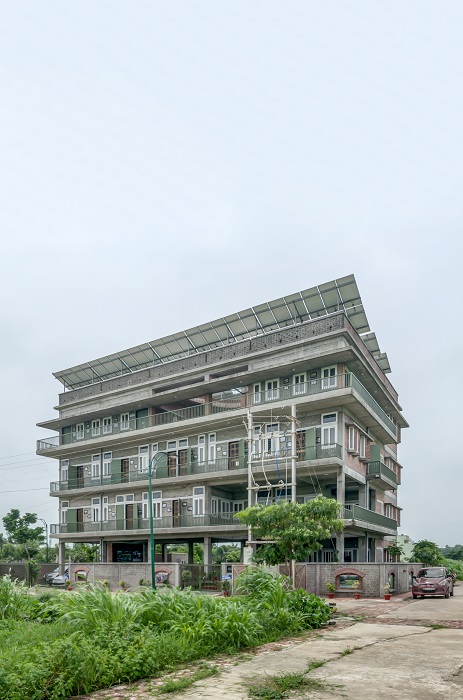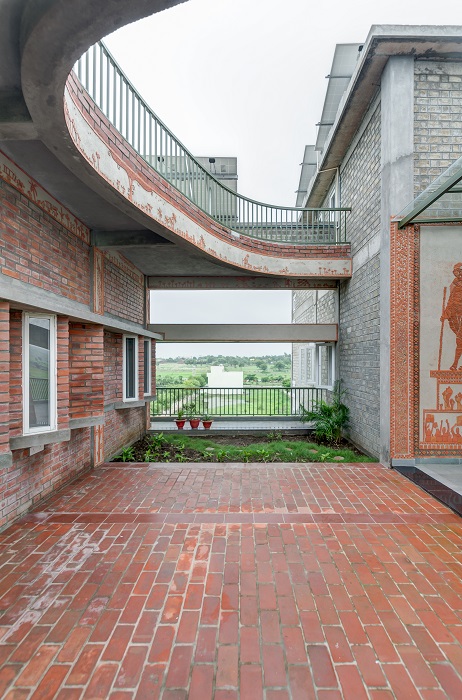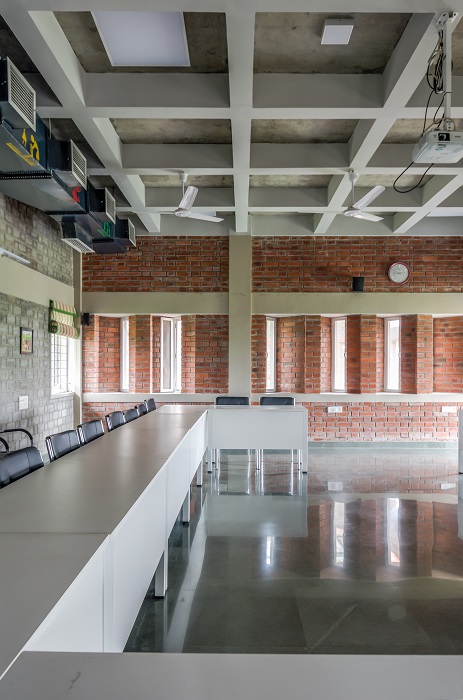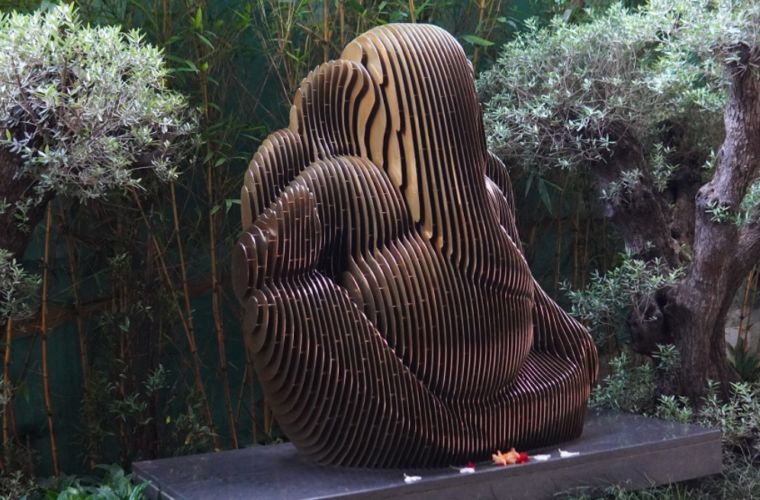Energy-efficient design for Bhopal community space
Bengaluru-based Biome Environmental Solutions has designed the Action for Social Development in Bhopal, which was to design a non-profit development organization that ensures livelihoods through natural resource development.
At the outset, the client wanted the space to foster an inclusive and collaborative work culture. Formerly an agricultural piece of land on the lowest level, the presence of black cotton soil made it prone to waterlogging due to poor outflow. The firm took up the challenge and raised the building by a floor, while the sunken area was converted into a wetland and a steeped well. This prevents flooding and encourages the replenishment of shallow aquifers, while the stepped wall acts as a community space.
Passive building planning, energy efficiency, water management and biodiversity remain pivotal to the design. Deep overhangs and courtyards reduce heat gain and glare, ensuring ample natural daylight. The eastern and western facades have windows skewed to the horizontal sun glare without compromising on daylight and fresh air. A landscaped court on the top floor, common court and balcony spaces on all the floors facilitate interactive spillover spaces in the workshop and boardroom respectively. Higher ceilings insulate the roof and local brick bat coba is used for weather-proofing the RCC-framed structure.
Wire-cut bricks and adobe bricks were used for the walls; the abode bricks were locally manufactured by mixing black cotton soil with fly ash, cement and lime. Dedicated spaces were chosen for indoor plants and herbs, with native fruit growing in the open areas. The wetland provides nesting spaces for summer birds with its aquatic and semi-aquatic vegetation. Operational energy usage was reduced through LED fixtures, energy-efficient fans, and air-cooling systems, which has reduced energy consumptions by two-thirds.
Energy is produced by a 20kVa solar PV panel system installed on the rooftop, and rainwater harvesting provides water for four months while the excess is used for recharge. Water-efficient fixtures reduce water consumption.


